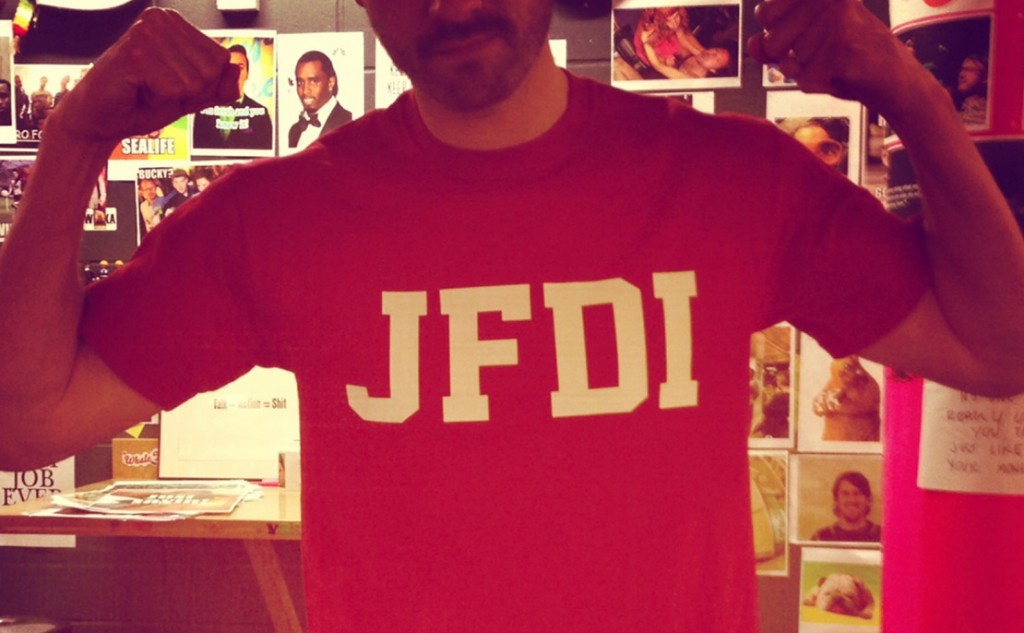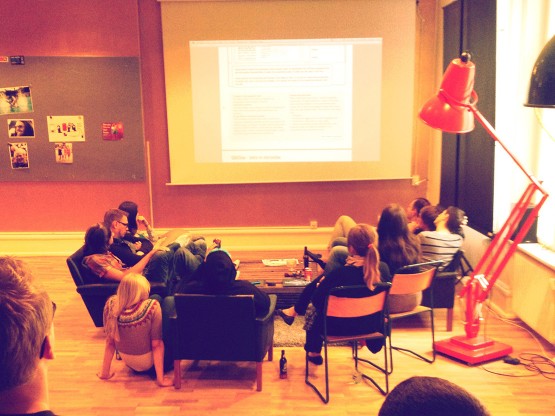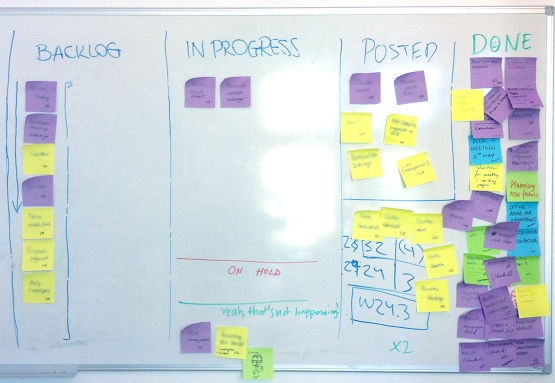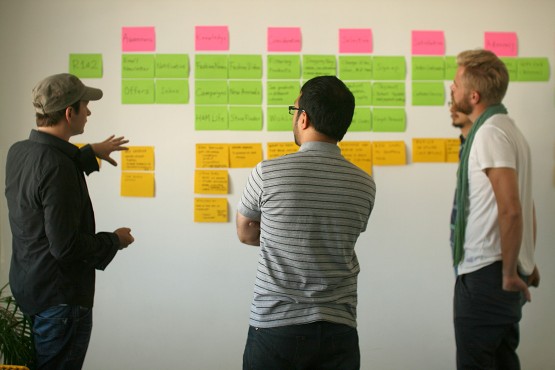We love creating amazing digital experiences at ustwo™ and anyway of working, which allows us to increase the time we have to “create”, is win win. It’s exactly because of this, that the term JFDI (Just F*ing Do It) started circulating in the studio — popping up in conversation, on t-shirts, wristbands, and not least within our working processes.

JFDI is part of our continuous journey to improve the way we work, and we’ve come up with some simple tips and tricks to share with you, designed to help bring a bit of JFDI into your day.
JFDI is more a mindset than a specific method - however there are a few simple practices we use that were inspired by Agile methods including Scrum, Kanban and most recently Lean UX. Incidentally we were lucky enough to have Jeff Gothelf, author of “Lean UX” here in Malmo only a few weeks ago running a great workshop.
So simply we’ve taken the best aspects of these methods and adapted them to suit our needs. Adaptability along with flexibility are crucial, as more often than not, we work with clients in corporate cultures who either apply their own version of Scrum, or work in non-Agile waterfall-based production.
The core principles described here have been used on some of our projects but have been simplified because in our experience, the more processes (and meetings!) the less enthusiasm and creative motivation there is. Bearing in mind JFDI is about asking ourselves “is this really needed and how important is it?”, it’s this mindset that helps us keep the process as tight as possible, 100% focused on creating and has helped define these simple core principles.
1. Have the team work as “one”

“We are ONE” - the 2013 Eurovision motto was everywhere in Malmö a few weeks ago. Although it’s admittedly cheesy, it’s also one of the most important principles of JFDI. Our aim is to work in cross-functional teams from the very beginning. Therefore at the start of a project everyone sketches together - UX designers, UI designers, developers, business people, project managers and clients (if possible). As one, the team discover what the right product is, and then how to deliver that product in the right way. This also means that the team is directly involved in planning the tasks to be done, which leads me to the next point…
2. Use a taskboard

Another really useful tool taken from Agile practices (Kanban primarily), albeit simplified, is the taskboard. When working on small or large projects, it’s vital to have a prioritised board of tasks. The team takes a task and moves it from ‘Backlog’ > ‘In progress’ > ‘Posted/tested’ > ‘Done’ as it’s handled.
While it’s usual for bigger projects to use Scrum or other Agile types of taskboards, small projects also benefit from a taskboard to structure & prioritise the project.
How you create the tasks themselves can be done in many different ways depending on the project and client, so that is up to the team. On one project we’re working on now, the team has broken down the work into a number of UX/UI tasks, some with ‘just enough’ details to get an idea of the work required. We’d rather focus on the detail as we go, than spend hours in planning meetings - hours that can be better spent creating.
What we end up with is a rough list of estimated tasks to get us started, which has been coordinated and prioritised together with the client. During the project we sync with the client to update them on how things are going…
3. Daily Synchronisation

Finally, the third principle of the JFDI way of working is to synchronise with the team on a daily basis, this includes the client. If the client can’t join us on a daily basis, we at least need some way of communicating directly with them, e.g. instant messaging or something similar.
A meeting or a call once a week is not enough, and although it’s difficult achieving daily contact on this required level, it simply has to happen. For ustwo™ and our clients by working like this, we’ve formed highly beneficial close working relationships and friendships.
Statistics show that people who know each other well perform 2.5 times better than those who don’t, so the business argument for encouraging daily communication is clear.
So to sum up the principles of JFDI:
- Start by involving the entire team in discussion & sketching.
- Turn these into tasks to distribute among the team members.
- Ensure that there is at least one daily sync to follow up on task status and to ensure priorities are agreed with the client.
Whilst working with these principles incorporate whatever methods, tools and processes you need to create brilliant designs that users love. Creativity is the only limit here.